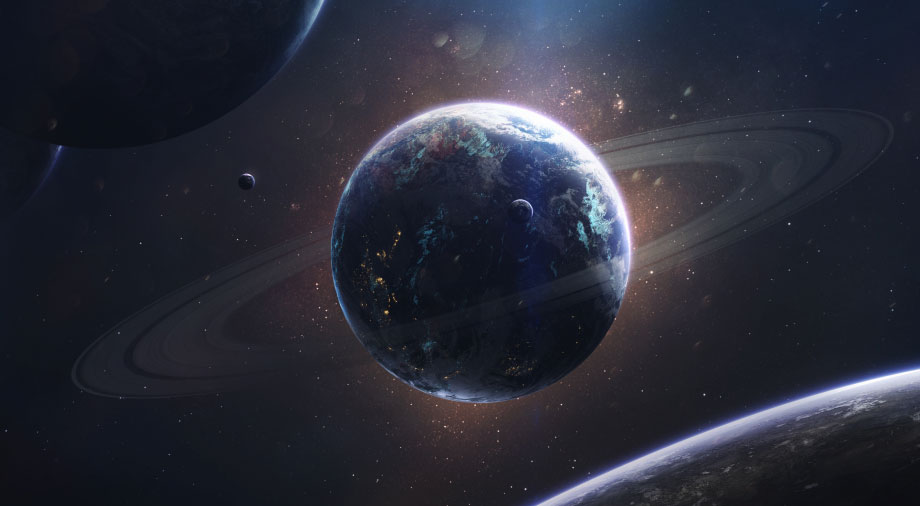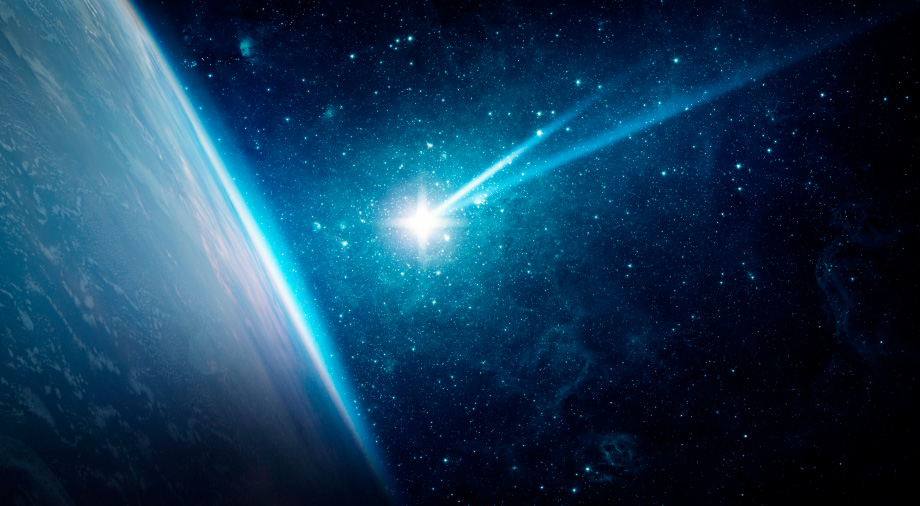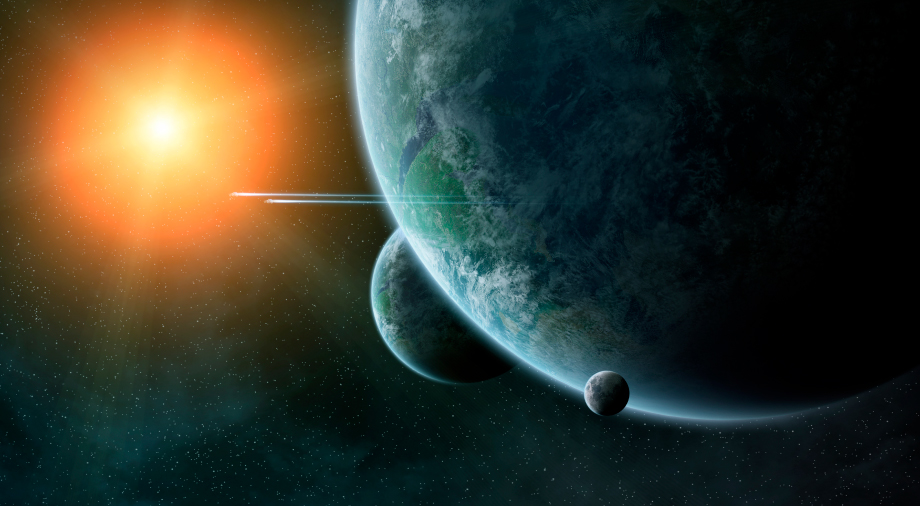We have already talked about the history of the discovery of exoplanets and the main methods of their search. Today we will talk about the most unusual extrasolar worlds astronomers have found.
Hot Jupiters
Our solar system is organized like this: four rocky planets come first from the Sun, followed by an asteroid belt, then two gas giants, then two ice giants, and then regions filled with icy bodies and comets. This is how astronomers simplified this order: when our Sun first formed, its radiation pushed light elements like hydrogen and helium away from itself. As a result, heavier elements remained near our star, from which rocky planets were formed, while the gas giants formed considerably farther away.
However, the first “full-fledged” exoplanet discovered in 1995 cast doubt on this entire scheme. The fact is that it is a gas giant, whose orbit passes at a distance of only a few million kilometers from its star. For comparison, Mercury never gets closer to the Sun than 48 million kilometers.
It quickly became clear that this is no exception, and such exoplanets are quite common in the Milky Way. They are usually referred to with the term hot Jupiters.
Hot Jupiters have some of the most extreme conditions we know of. Their atmospheres are heated to colossal temperatures, amounting to many hundreds or even thousands of degrees, which even some stars would envy. The record is currently held by the gas giant KELT-9b, whose temperature reaches 4300°C (~7800°F). For comparison, the surface temperature of Proxima Centauri, the nearest known star to our sun, is 2700°C (~4900°F). And since hot Jupiters are in tidal capture and always face the star on the same side, hurricane-force winds blow between their day and night hemispheres.
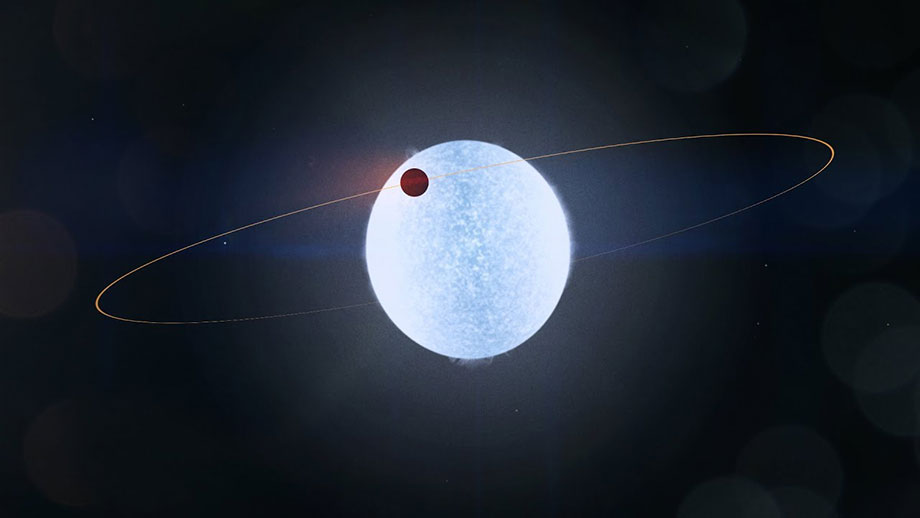
These worlds are also distinguished by the very exotic composition of their gas shells. KELT-9b, for example, has had iron and titanium atoms found in the atmosphere. On the night side, they most likely condense into clouds which rain down metallic showers. And on the gas giant HAT-P-7b, there is rain made of rubies and sapphires.
The origin of hot Jupiters is still the subject of scientific debate. According to one rather popular hypothesis, these worlds are initially formed at a much greater distance from the star, but under the influence of gravitational instabilities then “migrate” to the center of the system. At the same time, some scientists believe that hot Jupiters could have formed right in their current orbits by accreting material from a protoplanetary disk onto massive stone bodies that serve as their core.
Lava worlds
In addition to hot Jupiters, there have also been rocky exoplanets found in our galaxy whose orbits are so close to their star that their surface (at least on the day side) is an ocean of lava.
A textbook example is CoRoT-7b. The orbit of this exoplanet lies at a distance of only 2.5 million kilometers from its star. Because of this, its daytime hemisphere is heated to a temperature of 2500°C (~4500°F), which is comparable to the temperature of Proxima Centauri. This is above the melting point of iron and most known minerals, so the illuminated side of CoRoT-7b must be a giant lava ocean.
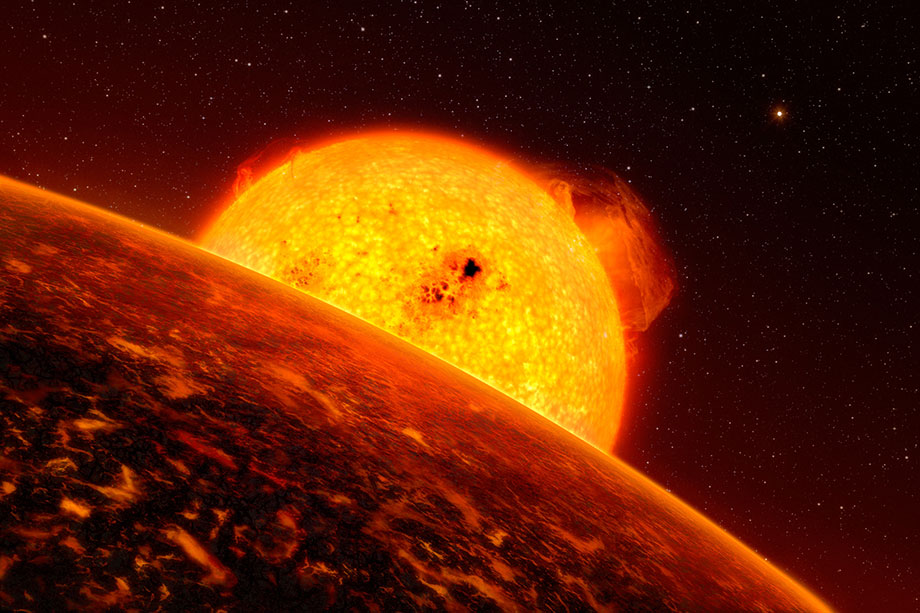
As for the night side, it is cooler there (of course, by the standards of this world) and the surface must be solid. However, the colossal heating of the day side still makes itself felt. Rock evaporating from the lava ocean is most likely transported in the form of vapor to the night hemisphere, where it then condenses and falls in the form of constant stone rain.
Super-Earths and Mini-Neptunes
If you look at the characteristics of the planets of the solar system, you may notice a fairly noticeable “gap” between the Earth and Uranus, with the latter being 14.5 times more massive than the former. There are no bodies in our solar system that lay between these two planets in mass, but such planets are found orbiting other stars. They are referred to as super-Earths and mini-Neptunes.
Super-Earths are rocky exoplanets whose mass is greater than Earth’s. For a long time, astronomers believed that their radii could not exceed 1.6 Earth radii. However, astronomers have recently found a record-breaking super-Earth, designated TOI-1075b, which made it possible to raise this bar somewhat. Its radius is 1.8 times greater than our planet’s, while its mass is 10 times greater.
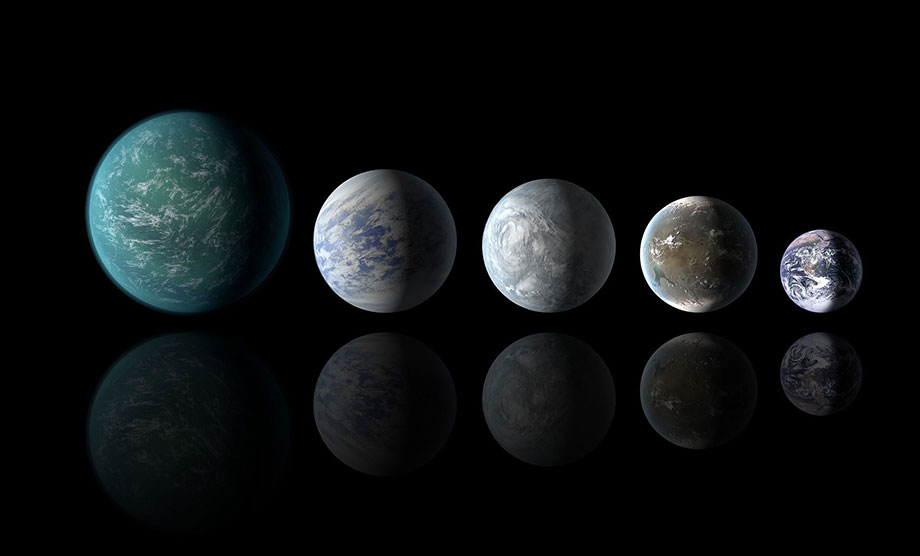
Mini-Neptunes, on the other hand, are bodies that have rocky cores surrounded by an extensive mantle consisting of light substances, like ice, water, ammonia, or mixtures thereof. Astronomers say that some mini-Neptunes are giant planet-oceans like the planet Solaris from the novel of the same name by Stanislav Lem.
As for the physical characteristics of mini-Neptunes, their radii range from 1.7 to 4 times that of Earth. Larger exoplanets usually have lower diameters or are ice or gas giants like those found in our solar system.
“Tatooine” Exoplanets
Our Sun is a single star. But about half of the stars in the universe have companions. Not so long ago, astronomers fiercely debated whether such systems could have their own exoplanets. Many scientists believed that due to the gravitational pull of two stars at once, planets would either not be able to form or would be quickly thrown out of their system.
We now know that such notions were mistaken. Of course, planets around single stars are much more common, but their presence in binary systems is also far from unique. Astronomers already know about dozens of such worlds. Some revolve around one of the system’s stars, some around the pair. Moreover, astronomers have managed to find exoplanets in systems with three and even four stars. An example of the latter is the gas giant PH1 b, which orbits one of the two pairs of stars that make up the Kepler-64 system.

Science fiction films taught us that exoplanets in multiple star systems were scorched deserts like Tatooine from Star Wars. But this is not at all necessarily the case. In fact, given the right orbit and atmosphere, a planet like this could have the right conditions for life to emerge. It would just have a more unusual sky than on our Earth.
Rogue planets
The direct opposite of these “Tatooine” exoplanets are the so-called free-floating planets, also known as rogue planets. These are objects that do not orbit any particular star.
At the moment, astronomers know very little about rogue planets. This is quite expected, since they are extremely difficult to find. To search for free-floating planets, both the transit method and the radial velocity method prove absolutely useless.
Most of the rogue planets known to us have been found by direct photography. All bodies discovered in this way are newly formed massive bodies that are still heated to high temperatures and emit a large amount of infrared radiation.
But what about older and smaller rogue planets? In 2020, astronomers reported the discovery of the free-floating planet OGLE-2016-BLG-1928, whose mass is comparable to that of the Earth. It was found using the gravitational microlensing method.
OGLE-2016-BLG-1928 is likely just the tip of the iceberg. According to various estimates, for every star in the Milky Way, there are from 100 to 100,000 similar rogue planets.
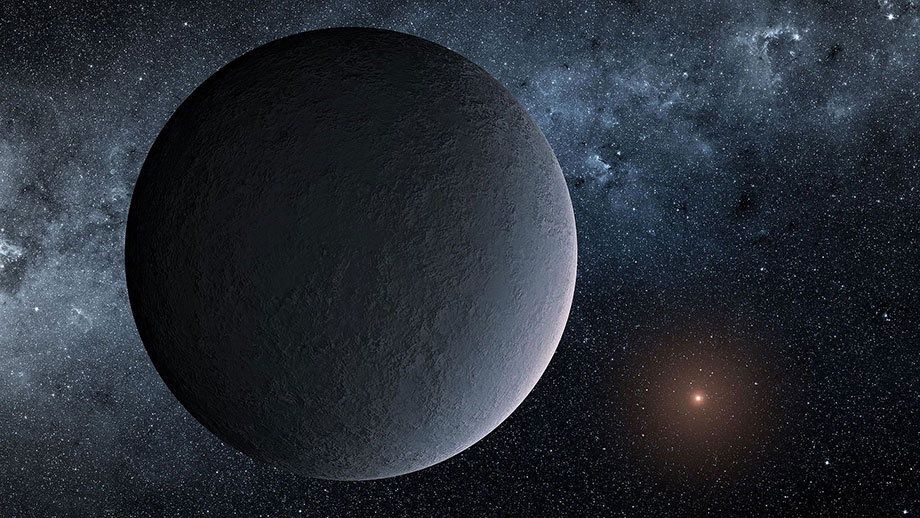
But where do these planets come from? According to the prevailing hypothesis, the vast majority of them were once part of star systems, and then were ejected into interplanetary space during various gravitational perturbations. Our solar system has probably also contributed to our galaxy’s number of rogue worlds. The results of computer simulations indicate that at the dawn of its existence, it could have included not four, but five giant planets, one of which was then “thrown out”.
However, it should be said that astronomers also admit that some rogue planets may never have been part of any star systems, and instead formed independently during the collapse of gas and dust clouds.
Compact systems
Another interesting discovery from astronomers is that many exoplanetary systems are much more compact than ours. In the simplest terms, we can say that in our solar system the distance between each subsequent planet approximately doubles. However, quite a few systems have already been found in which there are five, six, or even more planets – and at the same time their orbits could easily fit inside the orbit of our Mercury.
A classic example of such a system is TRAPPIST-1. It consists of a red dwarf with at least seven rocky exoplanets orbiting it. Their orbits are all within just over seven million kilometers of their star. For comparison, in the solar system, the distance between the first seven planets is 2.8 billion kilometers, i.e. 400 times more. An observer on the surface of any of the seven TRAPPIST-1 exoplanets would be able to see all the others in the sky, and most likely see their main geological landmarks with the naked eye.
Another interesting example is the system Kepler-90. It consists of a yellow dwarf and eight exoplanets whose orbits lie in an expanse roughly corresponding to the distance between the Sun and the Earth.

The question of how such compact systems manage to remain stable is also a matter of debate. After all, the objects in them are subject to much stronger gravitational forces from their neighbors than the planets of our solar system. One of the reasons for TRAPPIST-1’s stability is likely that its exoplanets are in orbital resonances with each other. This means that the periods of their revolution around the star have clear integer ratios. In the case of TRAPPIST-1, they are 8:5, 5:3, 3:2, 3:2, 4:3, and 3:2. That is, while the first exoplanet of the system makes eight revolutions around the star, the second one manages to make exactly five, and so on.
How unique is our solar system?
All of the above examples lead us to a logical question: how does our solar system compare to other star systems?
It is worth making an important caveat straight away: current methods for detecting exoplanets are best suited for detecting massive bodies that are close to the star and have a short orbital period. It is much easier to find a hot Jupiter that transits its star’s disk once a week than once every twenty years. Therefore, the picture which astronomers observe cannot be called complete. Of course, as the accuracy of observations improves and new telescopes are commissioned, they will gradually find missing pieces of the puzzle. But still, so many exoplanets and solar systems have so far eluded their observation.
At the same time, the five thousand exoplanets science has confirmed so far is already a fairly significant figure, allowing some preliminary conclusions to be drawn. And we can say, with caveats, that our solar system obeys all the basic rules by which other star systems are arranged. Sure, there may not be any hot Jupiters or super-Earths in it, but all of its main elements are similar to what astronomers have been able to find in other stars.
On the other hand, from the point of view of the general configuration of its planets, our solar system still differs markedly from most exoplanetary systems known to date. The main reason is the conjunction of Jupiter and Saturn. These gas giants very successfully balance each other, without getting closer to the Sun. This ensures the long-term stability of the solar system. It is possible that many of the systems known to us originally had a significant population of inner rocky worlds, which were then destroyed during the migration of gas giants, which later turned into hot Jupiters.
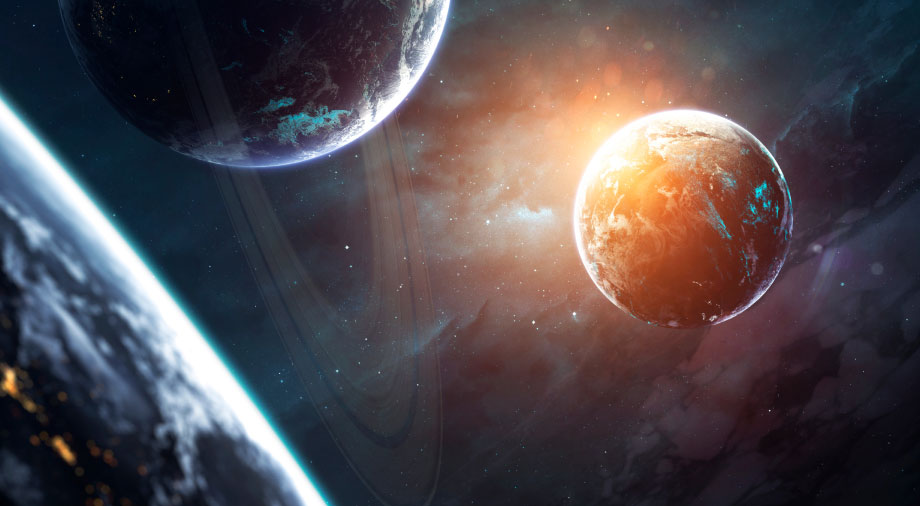
Another important distinguishing feature of the solar system is that the orbits of all its planets are close to circular and lie in the same plane. At the same time, the orbits of many known exoplanets are characterized by great eccentricities. Moreover, scientists have already managed to find bodies that revolve around their stars in polar orbits. Again, it is believed that the main factor that provided our solar system with configuration of orbits which has proven so amenable to the development of life on Earth is the stabilizing influence of the confluence of Jupiter and Saturn.
However, it should be borne in mind that the location of Jupiter and Saturn in itself is not something unique. Researchers’ current estimates say that, as a rule, giant exoplanets tend to be located between 1 and 10 AU (150 – 1500 million kilometers) from their star. For comparison, the orbit of Jupiter is located at a distance of 5 AU from the Sun, while Saturn is 9 AU away. Thus, the final shape of a star system will depend on a combination of many different factors. And if a single one is changed, the star system can be transformed beyond recognition.
In any case, astronomers’ abilities to study extrasolar worlds are growing significantly every year. This means that many more interesting discoveries await us in the future. Astronomers will likely find many more systems that are totally different from our solar system, as well as systems that can be described as practically twins.

